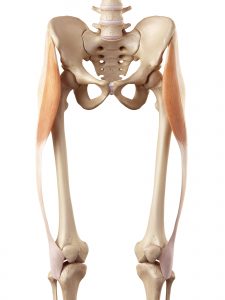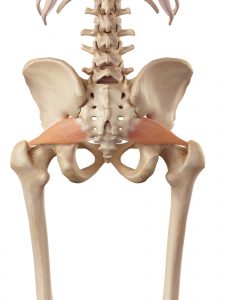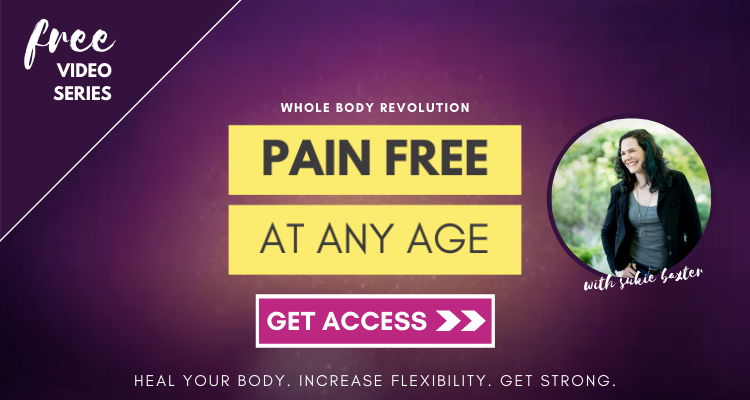We all know we should work on our posture and pay more attention to how we sit or stand in front of our computers — but why?
What is the importance of good posture with regard to our health and the function of our bodies in daily life?
Posture is usually that nagging thing you know you should improve, and you get a sharp reminder every time you find yourself rubbing that stabbing pain in your shoulder, or when you see a candid photo of yourself and cringe at your rounded back and head forward posture.
But before you sigh, roll your eyes, and move “fix bad posture” to the end of your to-do list, let me tell you a few things that might make you want to push better posture to the top of your priorities.
Good posture isn’t just a nice-to-have. It’s not something enviable but the sole property of dancers and Pilates instructors. Good posture is downright essential to the health of your body, but perhaps more shockingly, your posture deeply influences your brain.
Here are three ways in which posture affects your health and well-being:
The Gravity Effect
You are probably familiar with gravity. It tends to pull things downward. It does this to your body, too.
You’ll frequently hear older people complaining about gravity’s unkind effects on the less stable portions of their flesh. But that’s not precisely what I’m talking about here.
While gravity does most frequently have a downward pull on objects, its force can actually be lifting in the right circumstances. It’s tricky like that.
Here’s what I mean…
Imagine that your body is a series of blocks, like a children’s toy. Obviously, you’re not blocks, and this is only a model, but it serves to illustrate this concept.
Your feet are one block, then your legs, hips, torso, shoulders, and finally your head and neck. Picture these blocks stacked up neatly with all their edges aligned. The force of gravity travels directly through their center.
You now have a column that is very stable. You could even make a second one and place a longer wooden block across the two, and the columns would support its weight.
Now, imagine one block shifted out of alignment with the others. Maybe the middle block moves a few millimeters off-center. And then the block on top of that one moves a bit further, and so on until the column resembles almost a candy cane instead of a straight line.
Gravity will have an increased downward force on the floating blocks that have no support underneath them. In your body, these blocks would equate to your upper torso, shoulders, neck, and head.
Your body, unlike these imaginary blocks, has muscles, tendons, and ligaments that support its structure. The further forward one of the “blocks” of your body shifts, the more force your muscles have to exert in order to support your posture.
Every inch that your head moves forward of your center line equates to an additional ten pounds of force placed on the delicate muscles in your neck and upper back1.
Good posture, then, restores a neutral alignment where gravity’s force runs through your core and doesn’t exert this downward tug on your body. It alleviates the resulting aches in your muscles, gives you an instant energy boost, and improves range of motion (muscles that are already engaged in holding you upright can’t exactly move very well).
The Posture Stress Connection
All that added tension in your neck and shoulders not only causes you physical pain, it also results in an activation of what’s called your sympathetic nervous system—colloquially known as your fight or flight response.
There is a lot of literature written about how mental or emotional stress results in physical tension, but the opposite is also true.
When you sit in front of a computer, spine curled into a c-shape, head jutted forward to read the tiny text on your laptop, the resulting tight muscles create a type of physical armoring that depletes your energy reserves and results in wear and tear on your muscles and joints.
You probably don’t even notice how tight these muscles are. Over time, the tension becomes background noise, just a part of your everyday normal.
But that background static is doing more than giving you a literal pain in your neck. It also sends a tiny—yet constant—threat signal to your brain, throwing you into a micro-survival situation.
Your body doesn’t know the difference between muscles that are tight because you saw a tiger in the bushes (and thus prepared to run away, hopefully very, very quickly) and muscles that are tight because you spent seventeen hours debugging two billion lines of code yesterday.
Poor posture makes your muscles tight by default. They have to hold onto extra tension just to support your body in normal activities. Add on anything with even a moderate athletic demand and your muscles are doing double duty.
That stored tension results in chronic, low-grade stress. Stress is terrible for our health. It’s a lot like wind; for something unseen, it sure does a lot of damage.
Stress is the strongest predictor of a future cardiac arrest. High levels of the stress hormone cortisol are directly linked to a five-times increase in your risk for stroke and cardiovascular disease2.
While most stress management practices focus the mind and deal with thoughts, working through the body is a practical, tangible way to decrease stress levels biologically. Thoughts are intangible and it can be hard to measure change.
But physical tension doesn’t lie.
Posture and Confidence
You might think standing is standing and walking is walking, but that’s probably just because you’ve never really considered it much before. I’m sure you’re aware of the concept of body language — tiny “tells” that communicate thought and emotion to an observer.
Well, body language isn’t just something that exists in an interrogation room or that’s useful for criminal trials. You have body language, too. Everyone does, all the time.
The ways in which you sit, stand, and move communicate loads of information, but most importantly, these everyday actions talk to your own brain. Fascinating, right?
While most research on the ability of your body to influence emotional states centers around facial expression, a recent study expanded that to look at body postures, too. And their results were astounding.
Sitting in slumped, constricted postures was correlated with an increased use of words connoting negative emotion and first person singular pronouns (I, me) while upright-sitting participants increased self esteem and positive mood. Upright postures also appeared to reduce self-focus3.
There is even some evidence that upright postures positively impact depression4.
There is a two-way link between your mind and your body. While I’m sure you’re aware of the mind’s powerful effects on physical states, also called the placebo effect, the body also influences your brain.
Good posture, then, is the cornerstone of a healthy mind and body. It decreases strain on your joints, frees your muscles for movement and expression, decreases physical and mental stress and boosts self confidence.
All from standing up straight!
For more on improving your posture, buy Perfect Posture for Life, a comprehensive guide to stop slouching, stand taller, and move freely (even if you sit at a computer all day).
1. https://erikdalton.com/media/42lb-head/
2. https://www.webmd.com/heart-disease/news/20100909/stress-hormone-predicts-heart-death#1
3. https://www.ncbi.nlm.nih.gov/pubmed/25222091
4. https://www.ncbi.nlm.nih.gov/pubmed/27494342


